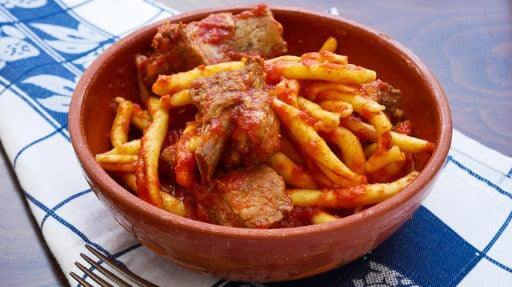Although Calabria is traditionally associated to pork and its byproducts, in particular to soppressata, this image - a real stereotype - does not fully represent the region. There are areas, especially in ancient Calabria Ultra, that is the ones more in the south, where the most loved meat is not only pork. And this, of course, has its environmental but also historical reasons. From an environmental point of view, the presence of arid and dry areas favored sheep breeding more than pig breeding: it is not by chance that these lands were inhabited over the course of time by populations of Greek and then Arab origin, without neglecting the presence of numerous Jewish enclaves. While for Greeks and Byzantines the use of sheep meat was first of all a matter of availability and preference, for Arabs and Jews it was also a real religious taboo.
Nowadays the most tender meat of young animals is preferred, but in these areas of Calabria not only small animals are eaten, such as kids and lambs, but also the more adult ones, properly treated in order to be appetizing. Sheep meat, called minuta in dialect because of its size, is used for feast days. Especially in ancient times the meat of the most mature animals, which was very hard, needed a long cooking. Sometimes the meat was cooked twice, first with water and wine, then fried with onion, as in medieval kitchens.
And the feast is complete only if the pasta is homemade. Fileja is the Vibonese dialect definition of homemade macaroni. It was an art that girls learned very early. Today Calabrian fresh macaroni pasta is sold everywhere.
If you want to try, all you have to do is mix durum wheat flour, soft wheat flour, eggs and enough water to obtain a hard but manipulable dough.
The dough is rolled out in a thin sheet, cut in strips and rolled in a ferretto, a traditional tool which can also be replaced by a long skewer. The strips of pasta are rolled up and the ferretto is gently pulled out, leaving the center empty. The sauce is a very traditional ragout. The meat, after being lightly marinated in red wine, is browned inoil, together with finely chopped onions and rosemary, then it is sprinkled with a drop of red wine. Finally, salt the fried meat and add the tomato paste. Add salt and a pinch of sugar and cook slowly for no less than an hour.
When the sauce is ready, cook the pasta and serve.




